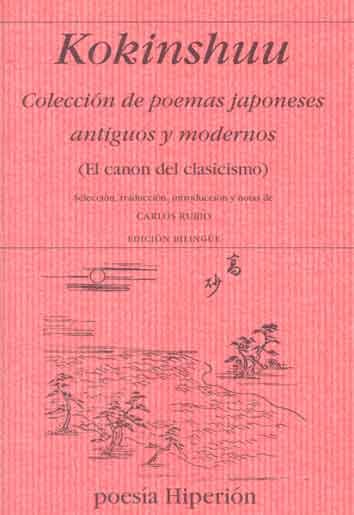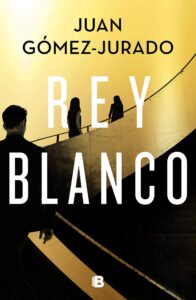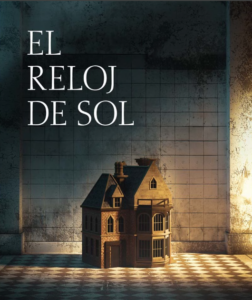
Original language: japanese
Original title: Kokinwakashu (Anthology of Ancient and Modern Japanese Songs)
Translation: Carlos Rubio
Year of publication: 905
Valuation: essential
In his latest novel “The Bead Game”, Hermann Hesse conceives an enclave dedicated entirely to the perfection of the arts and aesthetic enjoyment, isolated from the rest of the world and its tribulations, the city of Castalia. This idea of a refuge for arts and thought may seem like a literary utopia, however, it is not entirely foreign to historical reality. During the Heian era in Japan, the imperial court functioned in a similar way, as an isolated center dedicated to the arts, far from the mundane concerns and conflicts of everyday life (yes, it was horrible for all those who did not live at the court and they barely had anything to eat, but for the purposes of this review, let’s say a prayer for them and move on). In this time of relative peace and stability, the arts flourished as never before, with the women of the court leading this cultural renaissance from the seclusion of their chambers, comparable to cloistered nuns.
It is in this context that the Kokinwakashū emerges, an imperial anthology of waka poetry that not only symbolizes the pinnacle of aesthetics and literary sensibility of the Heian era (of course, until the arrival of Genji Monogatari), but also reflects the deep connection between nature, human emotions and the search for beauty, which would become characteristic of the Japanese spirit. Compiled in the early 10th century, the Kokinwakashū would be the first collection of poetry to receive imperial patronage, marking a milestone in the history of Japanese literature and establishing a canon for poetry (it is still referenced today in the basic education textbooks and for calligraphy students).
Waka poetry (和歌, “Japanese poetry”), the essence of Japanese poetry, emerged as a distinctive artistic form in a historical context where Chinese cultural influence dominated Japan’s literary landscape. Waka is a term that encompasses several poetic subgenres, although it is mainly used to refer to tanka (短歌, “short poem”), a format of 31 syllables divided into units of 5-7-5-7-7 (if you like). familiar is due to the fact that the haiku (俳句) was later derived from that initial part).
In its beginnings, this poetic style was nourished by indigenous oral traditions, which distanced themselves from the conventions of Chinese poetry, predominantly written in kanji and characterized by its formal and thematic rigidity. The adoption and adaptation of kanji (漢字, Chinese characters) into Japanese initially allowed the imitation of Chinese poetry (a sign of status and erudition, like Greek to the Romans or French to the Russians); However, the creation and evolution of kana (Japanese phonetic writing system) marked a turning point (a clear point of comparison is the “Manyōshū” or “Collection of Ten Thousand Leaves”, compiled in the 8th century, which also includes short poems, although written mainly in kanji, and following Chinese standards). Kana offered greater flexibility and accessibility, which facilitated its spread among those who did not have easy access to Chinese culture and language (read: women). This innovation was crucial to the development of a genuinely Japanese poetic voice. However, the choice of waka by the Heian court aristocracy was not merely aesthetic, but also an act of cultural self-affirmation in the face of Chinese influence (of course, all this would not have been possible without the decline of the Tang dynasty ). While administration and scholarship were still governed by Chinese standards and language, waka poetry became the domain where the Japanese spirit could express itself freely and fully.
The development of waka, parallel to that of kana (or rather, feeding off each other), reflects the emergence of a Japanese aesthetic of its own. Later, the women of the court would play a fundamental role in its flourishing. Figures such as Murasaki Shikibu (Genji monogatari) and Sei Shonagon (The Pillow Book), using kana, contributed to Japanese literature with works of unprecedented sensitivity and emotional depth. Through their diaries, stories and poems, these women articulated personal experiences and observations of the courtly world with an unmistakable voice, disassociating themselves from Chinese literary models (it would be enough to mention that in their books, the characters quote poems from the Kokinwakashū). This aesthetic deliberately distanced itself from imported Confucian and Buddhist ideals (which are central to Manyōshū), finding beauty in the ephemeral and the subtle, concepts encapsulated in the idea of mono no aware (物の哀れ, empathy towards things). , clearly Shinto). The Kokinwakashū, compiled in this transitional era, is not only a testament to the refinement of waka poetry but also an emblem of Japan’s cultural autonomy.
Regarding the themes of the poems, the Kokinwakashu is organized into 20 sections (in addition to the prologues), which aim to cover the range of human emotions (happiness, melancholy, love, etc.), as well as their relationship with nature. (something that would be further reinforced in haiku). In addition to those related to festivities or ceremonies, for example, the new year or funerals.
I would like to present some of the Kokinwakashu poems, hoping to awaken your interest, also making mention of their pictorial representation, which was of equal or greater value than the pure meaning of the words (which to this day continues to be cultivated through study and the practice of traditional calligraphy). The poems I chose are my particular preference. In addition, I took the courage to include others only in Japanese (written with my hand). By the way, the edition presented here is that of Hyperion. It is a bilingual edition and has a very good introduction, although the style in which the poems were translated may not be to everyone’s liking (mainly because in some cases they tried to include rhymes, which was negligible in the context of waka). So I would recommend looking for other translations, either in books or on the internet. You can also search on YouTube for the recited poems, as ideally they were meant to be appreciated, it is a totally different experience (just search for 古今和歌集朗読).

Won’t those be
where the nightingale sings.

It was only yesterday
when the tender herbs

The white pearls
that fell into my sleeves
of our farewell.

Ah yes the lot
Not even in dreams
I want to be seen by him.

Oh, how I long for that one
that planted you so long ago!

old and hard
Not even men cut them.
Source: https://unlibroaldia.blogspot.com/2024/04/kokinshuu-coleccion-de-poemas-japoneses.html



